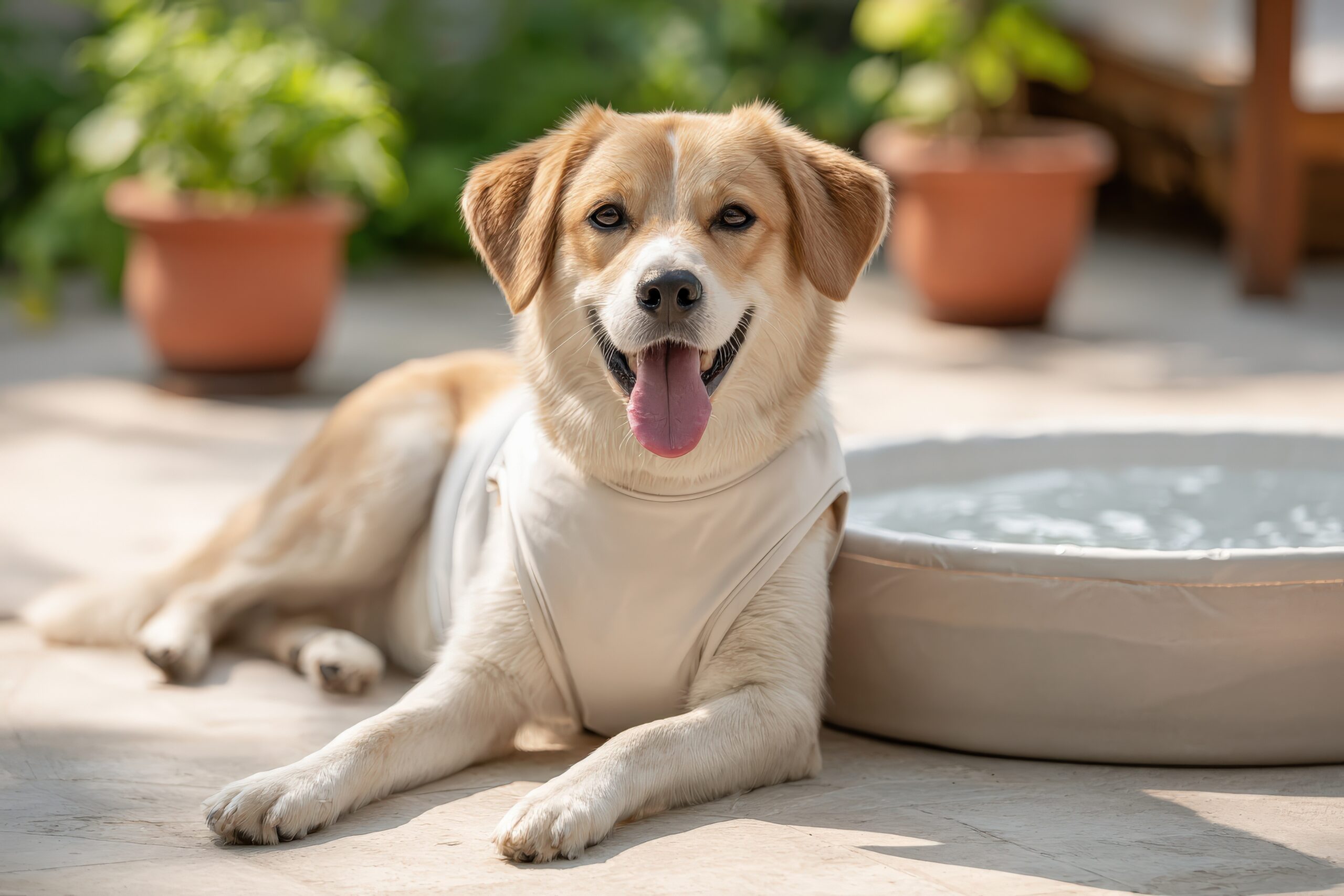As summer temperatures rise in Southern California, our pets are just as vulnerable—if not more so—to the effects of extreme heat. Unlike humans, dogs and cats don’t sweat the same way we do. They rely on panting and a few sweat glands in their paws to cool down, which makes them much more susceptible to heatstroke, especially when left in hot environments.
Heatstroke in pets is a true emergency that can lead to irreversible organ damage or even death if not treated quickly. As a pet owner, understanding the early signs of heatstroke and knowing what actions to take could be life-saving for your furry friend.
What Is Heatstroke in Pets?
Heatstroke—also known as heat exhaustion or hyperthermia—is a condition that occurs when a pet’s body temperature rises above the normal range and they can no longer regulate it on their own. The normal body temperature for dogs and cats ranges between 101°F and 102.5°F. When their internal temperature rises above 104°F, it becomes dangerous. At 106°F or higher, organ failure, seizures, and death can occur rapidly without emergency intervention.
Heatstroke can happen in a matter of minutes, even in seemingly mild conditions. Enclosed spaces like cars, poorly ventilated rooms, or even sunny backyards without shade or water can be deadly during warm weather.
Early Warning Signs of Heatstroke in Pets
Identifying heatstroke early gives your pet the best chance for recovery. Here are common signs to watch for:
In Dogs:
-
Excessive panting or drooling
-
Bright red or pale gums and tongue
-
Increased heart rate
-
Vomiting or diarrhea (sometimes with blood)
-
Weakness or uncoordinated movement
-
Glazed eyes or a dazed expression
-
Collapse or seizures
In Cats:
-
Rapid or labored breathing
-
Lethargy or staggering
-
Drooling (less common but possible)
-
Vomiting
-
Red or pale gums
-
Restlessness or confusion
-
Collapse
Keep in mind that some pets are more prone to heatstroke than others. Brachycephalic (flat-faced) breeds like Bulldogs, Pugs, Persian cats, and Shih Tzus are at higher risk due to their limited ability to cool themselves through panting. Senior pets, overweight animals, and those with underlying health conditions are also more vulnerable.
Immediate Actions to Take If You Suspect Heatstroke
If you notice any signs of heatstroke, act quickly but carefully. Here’s what to do:
1. Move Your Pet to a Cooler Environment
Take your pet indoors or into the shade. A car with air conditioning or a room with a fan is ideal. Avoid direct sunlight and hot pavement.
2. Cool Them Down Gradually
Use cool (not cold) water to wet your pet’s body. You can apply damp towels to their neck, armpits, and paw pads. Using cold water or ice can cause blood vessels to constrict, which traps heat inside and worsens the condition.
You can also place your pet in front of a fan to help with evaporation. Never submerge them in ice water or use ice packs directly on the skin.
3. Offer Small Amounts of Water
Let your pet drink cool (not ice-cold) water if they are alert enough to swallow. Do not force water into their mouth if they’re unconscious or having trouble standing, as this can lead to choking.
4. Get to a Veterinary Emergency Clinic Immediately
Even if your pet seems to improve, heatstroke can cause internal damage that isn’t immediately visible. The safest choice is to get them to an emergency veterinary clinic as quickly as possible for a full evaluation and treatment.
What Not to Do
-
Don’t use ice water: It can shock your pet’s system and worsen the situation.
-
Don’t leave your pet alone to rest: Ongoing symptoms can escalate quickly.
-
Don’t assume improvement means recovery: Many internal complications can occur hours after the initial heat exposure.
Veterinary Treatment for Heatstroke
At BrightCare Animal ER in Mission Viejo, we treat heatstroke as the medical emergency it is. Once your pet arrives, our emergency team will assess vital signs, begin IV fluid therapy to restore hydration, and closely monitor organ function through blood work and other diagnostics.
In some cases, additional treatments like oxygen therapy, medications to protect the gastrointestinal tract, and hospitalization for monitoring are necessary. The sooner your pet receives professional care, the better their chances for a full recovery.
How to Prevent Heatstroke in Pets
Prevention is always better than cure. Here are a few important ways to keep your pet safe during hot weather:
-
Never leave your pet in a parked car. Even with windows cracked, temperatures can rise to fatal levels in minutes.
-
Avoid walks during peak heat hours. Early morning or late evening walks are best.
-
Provide constant access to shade and fresh water—whether indoors or outdoors.
-
Be mindful of hot pavement. If it’s too hot for your hand, it’s too hot for their paws.
-
Keep your home cool. If you’re hot, your pet is too. Use fans, AC, or cooling mats when necessary.
-
Know your pet’s risk factors. If your pet has breathing difficulties or other health concerns, consult with your vet about safe summer practices.
When to Contact an Emergency Vet
If your pet is showing signs of heatstroke—or if you’re unsure but concerned—don’t wait. Immediate veterinary care can save your pet’s life. At BrightCare Animal ER, we’re available 24/7 to handle heat-related emergencies and other urgent care needs. Our Mission Viejo emergency vet team is trained to handle high-stress, time-sensitive cases with the attention and skill your pet deserves.
If you’re searching for a 24 hour pet hospital, look no further than BrightCare Animal ER. We’re here for you and your pet, day or night, to provide the highest level of emergency care when it matters most.


